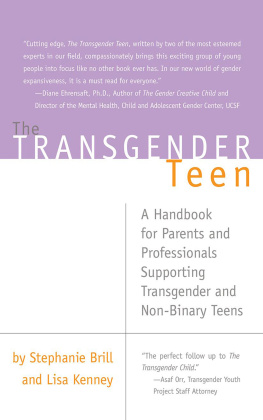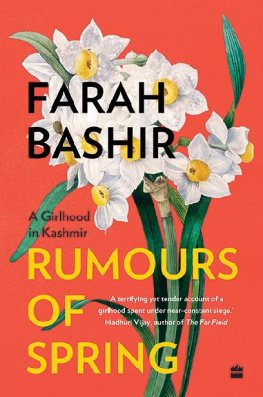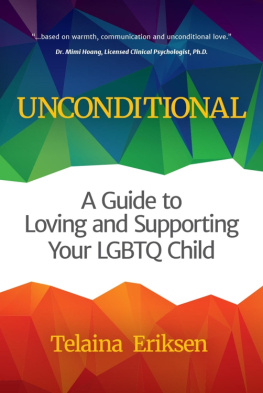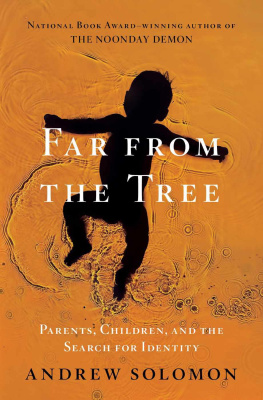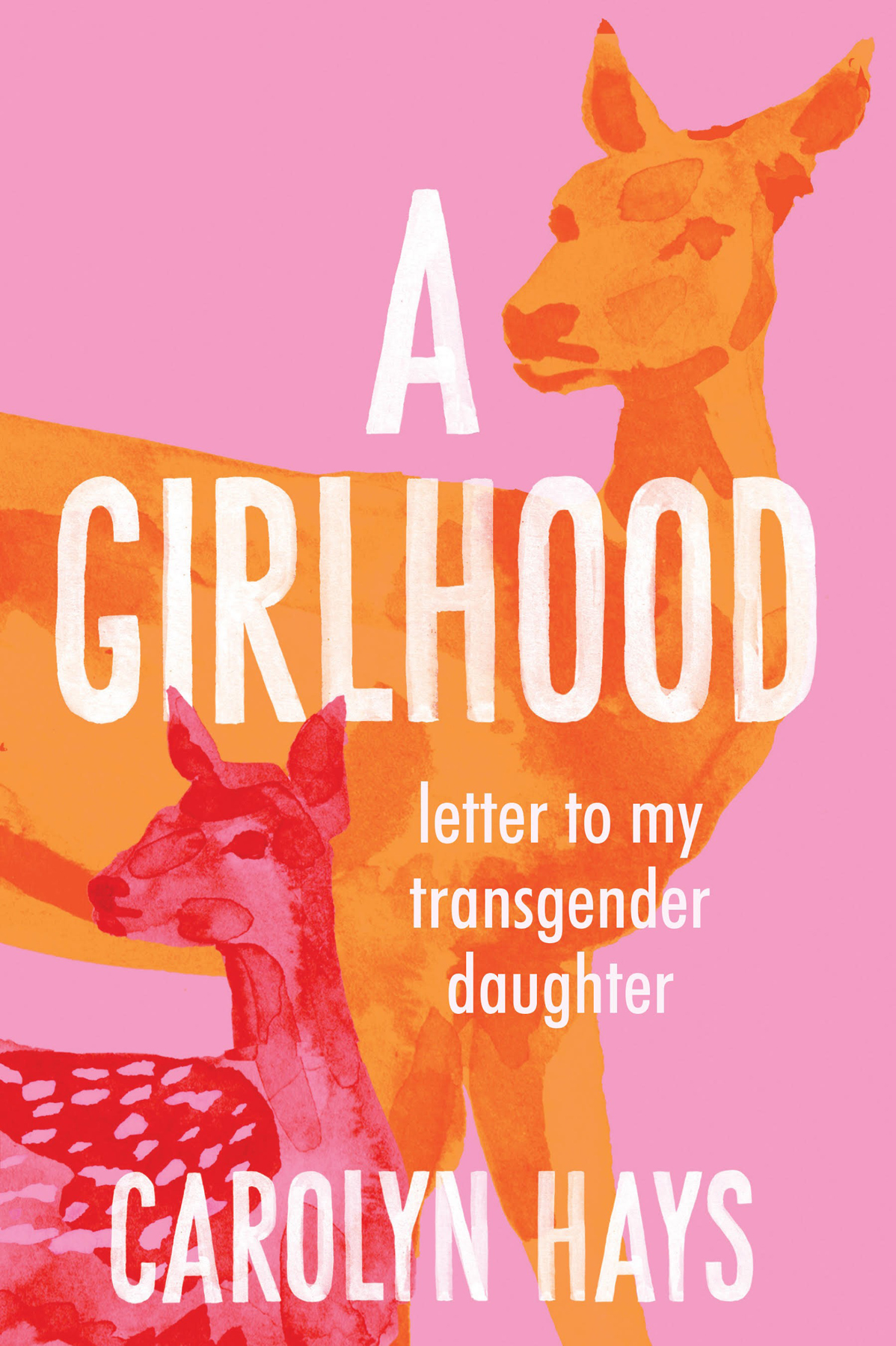Contents
Guide
Pagebreaks of the Print Version
A GIRLHOOD

LETTER TOMY TRANSGENDERDAUGHTER
Carolyn Hays
BLAIR
Copyright 2022 by Carolyn HaysAll rights reserved
Printed in the United States of America
Cover design by Mel Four, Picador art department
Interior design by April Leidig
Blair is an imprint of Carolina Wren Press.

The mission of Blair/Carolina Wren Press is to seek out, nurture, and promote literary work by new and underrepresented writers.
We gratefully acknowledge the ongoing support of general operations by the Durham Arts Councils United Arts Fund and the North Carolina Arts Council.

All rights reserved. No part of this publication may be reproduced, stored in a retrieval system, or transmitted in any form or by any means, electronic, mechanical, photocopying, recording, or otherwise without the prior permission of the copyright owner.
Library of Congress Cataloging-in-Publication Data
Names: Hays, Carolyn, author.
Title: A girlhood : letter to my transgender daughter / Carolyn Hays.
Description: [Durham] : Blair, [2022]
Identifiers: LCCN 2022011030 (print) | LCCN 2022011031 (ebook) | ISBN 9781949467901 (hardcover) | ISBN 9781949467918 (ebook)
Subjects: LCSH: Parents of transgender children. | Transgender children.
Classification: LCC HQ759.9147 .H39 2022 (print) | LCC HQ759.9147 (ebook) | DDC 306.874086/7dc23/eng/20220421
LC record available at https://lccn.loc.gov/2022011030
LC ebook record available at https://lccn.loc.gov/2022011031
AUTHORS NOTE
Ive changed the names of people andobfuscated the names of places in this book.I wrote this for my daughter, and shesallowing me to share it.
FIRST
THIS IS NOT A TRAGEDY.
But it started the way so many tragedies doin a quiet and awful way, a common occurrence, a weary dailiness to it. It started with a knock at the front door.
I didnt hear the knock. I was writing in the mother-in-law suite connected to the house by what we called the breezelessway.
Your older sister answered the knock and then came to get me.
This moment, this knock, changed our lives forever. It created fissures that remain: This was our lives before it. This was our lives after. Everything changed. There was panic and loss and a kind of fear that never really goes away.
You were at its center, but we protected you from ityour father and I, your older sister, and your two older brothers. It was a story that I finally told you when you were nine years old. Wed left that house by then. Wed left that southern state. Wed moved more than a thousand miles away, due north. But I worried that the story might pop up in conversation, unexpectedly from an aunt, a friend, someone assuming you knew about it because it was about you. I didnt want you to hear it from someone else.
I told you a pared-down version of it, sitting on a sunny sofa in our living room. Weve moved so many times that the sunny sofa blurs in my mind from one living room to the next, like each living room is a train car zipping past. The story went like this. A man was at the door, sent from the Department of Children and Families. He was there to investigate us, as parents. There had been a complaint. The complaint was about you being transgender, and we quickly learned that in this southern state with Republican-appointed judges, we could lose custody. We could lose you. This was what I tried to explainthe knock at the door and what happened in the days and weeks and months that followed. When I was finished, you didnt have any questions, and you never asked to hear the story again.
But I think you deserve to have it in full. It belongs to you. Im committed to telling you the brutal truths of this story, your story. For a long time, I havent known how. But now I do. Ill also tell you the beautiful truths. This is how it should be. This is how we should prepare children for the world. (I dont know how to prepare children for this world.)
What happened upended us, and yet it oriented us. Before the knock at the door, our idea of familyof what we would do for each other in crisis was theoretical. It became manifest.
What happened to us shouldnt happen to anyone. But it did, and it keeps happening, especially to families like ours.
How we responded made us understand who we are. What we did for you, we suddenly understood that we would do for any of us.
In the end, though, this is just one part of your larger story, and it doesnt define you.
Part I BEFORE THE KNOCK
AS I SET OUT to write this, youve recently had your thirteenth birthday. I remember it this way. Youre sitting in a spindle chair thats been transformed into a flowering throne. Its morning, and youre still in your pajamas. The night before, while you were sleeping, your father and I cut some of the low-hanging boughs of the massive tulip magnolia tree in our backyard and taped them to the chair in such a way that they curve and fan out over your head. The petals are thick, the blooms heavy, white with flushes of purple and pink. In my memory, theyre luminous. Youre smiling. You look up to see the blooms bobbing over your head, and I wonder what it looks like from your perspectivethe structure of branches, the petals surrounded by waxy green leaves.
Throughout your life, Ive tried to imagine what things must look like from your perspective. I cant ever really know this. And so much of what I have to tell you happened before you could form memories of your own. But I took notes. I paid attention. What I can offer you is what I saw, what caught my attention, what sometimes astounded me, and this telling is my attempt to put it together for you. Imperfect, limited, and awash in love.
I could start where so many of these stories begin, with a label. But that wasnt the beginning.
This was: Your brain, a small blushing bud. It unfurled, as all of our brains do, with the ticking of some internal clock. On cue, certain areas began their quiet work of becoming. Neurons fired awaythose brilliant pistons. Within the exquisite architecture of your brain, there is a small area tucked away, like a pearl. This one region grew, yes. But in a typical boy, it would be double in size. Yours is the size one would find in a typical girl. (Apologies for using the word typical here, in its more limited medical way, especially as Im trying to broaden experiences, not narrow them down. You will never be a typical girl, but neither was I. Neither was your sister. Neither were your grandmothers or great-grandmothers or any of your ancestors. I dont actually believe that typical exists.)
This area is known as the central region of the bed nucleus of the stria terminalis. I think: Bed, like a garden, lush flowers, heavy-headed, nodding in a breeze. Nucleus, like a lit globe, a fiery hub. And stria terminalis reminds me of the last train stop in Rome, where I once spent Christmas in my early twenties. This is how my own brain workstrying to collect what I remember and hitch it to what I hope to understand.
(And I love the human brain. There is a long and brutal history of pathologizing trans people. But Im not doing that. Im awed by how neurologically diverse we all are, how intricately wired, all of the vast and stunning individual structures within each of us.)


